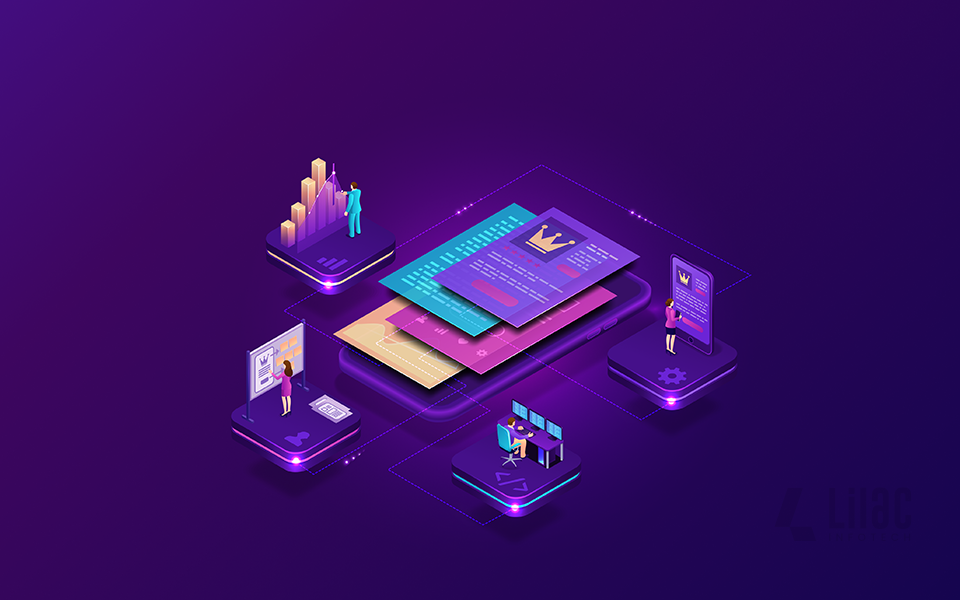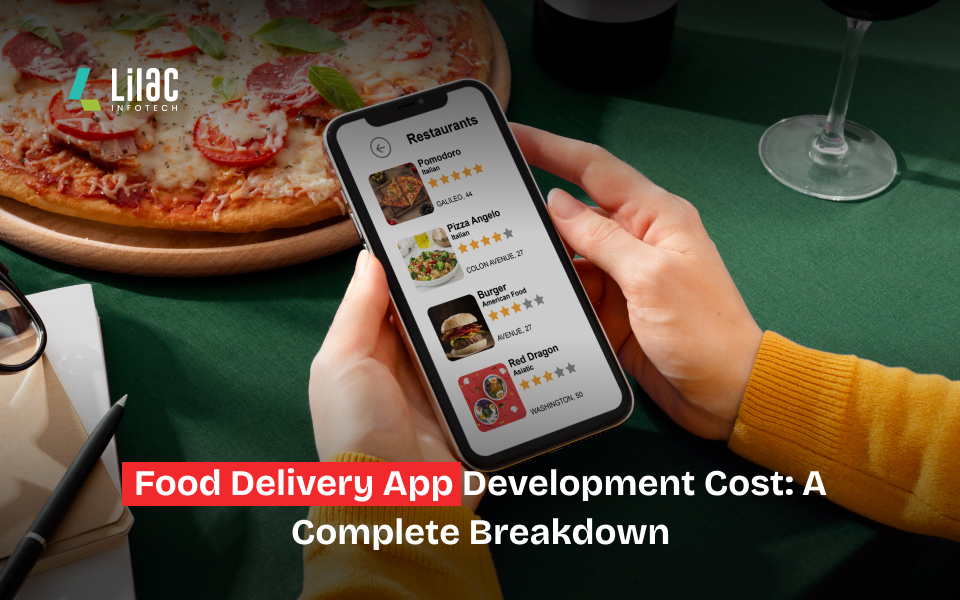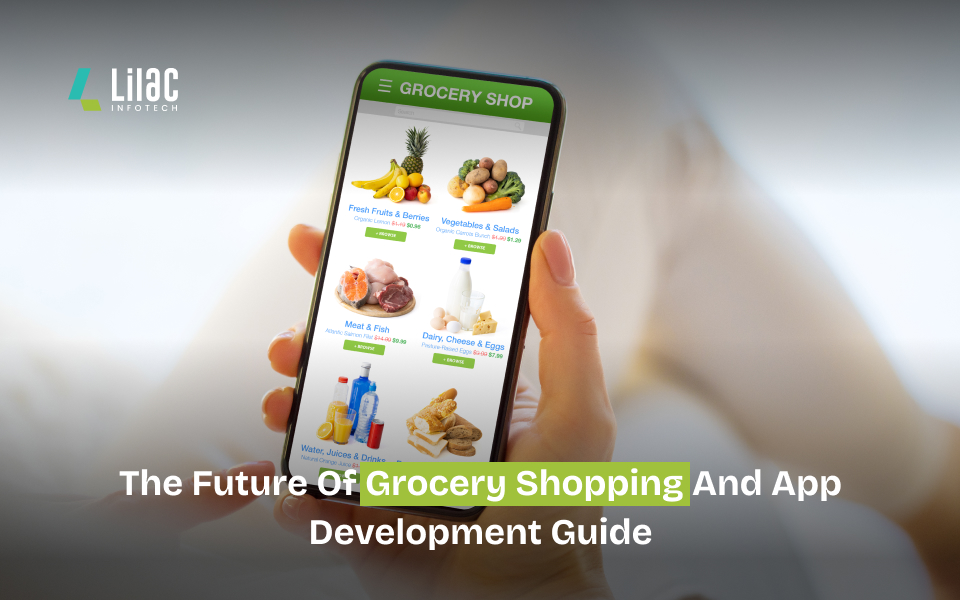
It's no surprise that the mobile app market is growing, with over 6.3 billion smartphone users worldwide. App usage and smartphone penetration continue to expand steadily, with no indications of stopping short. According to surveys, the average phone user checks their phone 262 times every day! That happens every 5.5 minutes.
Mobile App Statistics Key 2023
In 2023, mobile applications are estimated to produce more than $935 billion in revenue.
- The Apple App Store offers 1.96 million applications for download.
- The Google Play Store has 2.87 million applications available for download.
- 21% of Millennials use an app 50 times or more every day.
- 49% of consumers use an app 11 or more times per day.
- Mobile applications account for 70% of all digital media time in the United States.
- The typical smartphone user utilizes ten applications per day and thirty apps per month.
The App Development Process in Key Stages
Lilac’s mobile development process is divided into six distinct stages. Research, planning, prototyping, design, app development and testing, and product delivery are examples of these. Because we employ the Agile app development technique, the development process is done in sprints that may apply all of the app development phases described above at the same time.
Stage 1: Developing and investigating an app idea
Every app begins with an idea. However, you must first narrow down your mobile app development company concept and turn it into a clearer image of a future mobile app. That is what the research phase is all about. At this stage, you and your mobile app development team will prepare a brief on your mobile app idea based on extensive research and analysis.
Your preliminary study should include the following topics:
- Market analysis includes investigating market dynamics, saturation, and current trends.
- Competitor research entails discovering and analyzing your rivals' products.
- Common app category characteristics: essential features seen in the majority of similar mobile solutions;
- Analyzing your target audience entails obtaining information about the consumers who are most likely to utilize your mobile app.
- A user persona is a thorough depiction of a fictional person who represents the aggregate image of your target audience.
- Client journey map: the steps your client takes while interacting with your firm
- A value proposition is a guarantee of the value your software will provide.
This app development stage produces a short brief that outlines the main idea of the mobile application, target customers, mobile platforms, and other requirements for a consistent app development process. A mobile app brief is one of the foundations of a quick development process. The more specific you’re brief, the easier and quicker it will be to identify software requirements and project scope.
Stage 2: Make a plan for everything.
The basic brief is transformed into a feasible plan at the next step of our app development process. Over the course of two weeks, our team creates a product plan outlining your mobile app's high-level objectives, user personas, platform selections, monetization methods, success measures, and other app components.
Your team will also map out the app development process here. The planning stage's output presents itself in three major project-related documents:
- Technical design document: describes each area of the mobile app design, such as system architecture, business logic, and interfaces;
- Product roadmap: a strategy that includes short- and long-term objectives that are related to precise dates and expenses; and
- Product needs are translated into technical requirements in the technical requirements document.
Stage 3: Prototyping and validation of prototypes
It may appear simple to come up with a brilliant concept, but it is not assured that everyone will agree that it is excellent. As a result, evaluating your product against real-world expectations is an important step toward developing a successful solution concept. The good news is that you can test your concept without creating a mobile app. Instead, you may refine your vision by doing user interviews and surveys, testing app flows, and reviewing your competition.
It may take you around a week to show the feasibility of your app concept on average. During this stage, you update your user personas, change your marketing strategy, and provide additional input to your app developers for the next app development process.
Another proven technique to validate your product concept is through rapid prototyping. A prototype is a rough clickable mock-up that resembles a genuine app and illustrates the design flow and operation of an app. It lacks coding and full-fledged functionalities, but it allows you to collect crucial feedback from real consumers.
Design sprints result in prototyping. It takes around a week for your UX/UI team to create a prototype and another week to validate it.
Remember that your focus group should consist of at least 3-5 people who offer comments on:
- Relevance of app features,
- Customer journey,
- App usability,
- Navigation design and other factors
Step 4: Design
After validating a strong app prototype and mapping the user flow, UI/UX designers produce thorough design layouts to define each screen of the eventual application. Your design team will also create a style guide that sets design rules for your product's user interface so that it is produced consistently. A style guide covers visual aspects such as font, colours, and other components that are all consistent with your brand's image.
Overall, the design of the application may take your development team 2 to 3 months. Volatile design trends, emerging technology, and shifting needs may cause the design schedule to be extended. The layouts are then completed. It is at this point that development begins.
Stage 5: Design and testing
One of the most time-consuming processes is app development. The typical time to build up your application's front- and back-end is 4 to 6 months. Before beginning to code, mobile app developers will determine:
Milestones for technical app architecture, technology stack, and development The intricacy of your digital product influences both mobile app development times and technology selection.
- A basic app takes the least amount of time to develop and takes about 3 to 4 months.
- A medium-complexity solution needs more input and takes 5+ months on average.
- A complicated program with rich functionality, advanced design, and a broad tech stack requires at least 6 months completing.
- The number of platforms is also an important temporal factor. An Android or iOS app takes less time to build than two native programs, one for each platform.
You’re QA and testing team validates all features, code modifications, and upgrades. QA engineers serve as your initial users, approving the quality and performance of each software component.
Stage 6: Product release
The final step in the mobile app development cycle is to release and publish your app on app stores. A beta version is usually released before the major release. A beta application is a complete product that may have multiple known or unknown problems. It enables your development team to get input from end users and fine-tune the solution before its ultimate release.
The extensive evaluation procedure is the primary reason why a product launch might take up to one month. App stores will first assess your application to ensure compliance with the rules before accepting your submission. Keep in mind that the evaluation processes and rules for the Apple App Store and the Google Play Store are not the same. Pre-release actions that prepare your launch application early in development should also be included in the release stage.
Factors Influencing the App Development Timeline

The typical app development time is not a fixed metric that applies to all projects. Instead, it is made up of factors that might either shorten or lengthen your time to market. Some of these factors are listed below.
Mid-project modifications
Few projects are finished exactly as planned, since new insights may emerge mid-development and need a change in strategy. That is why most development teams advocate for an Agile methodology, which provides flexibility and allows for adjustments.
There is, however, a significant distinction between gradual improvements and a drastic shift caused by poorly stated needs. Significant modifications in scope, particularly if unforeseen and unapproved, might significantly alter your timeframe and incur additional expenditures. Not to mention that introducing additional functionality into a system may introduce new issues.
To avoid this, your development team should take the time to establish requirements, analyse your target audience, and choose the appropriate technology stack. Each modification should be verified and authorized by project stakeholders to ensure that the appropriate personnel are working on the appropriate feature.
A project's success is dependent on adequate project planning, precise estimates, calibrated procedures, and technical proficiency. Teams with little to no experience, on the other hand, tend to lack such core abilities simply because they haven't completed enough projects to establish a firm picture of software development issues and other specifics.
Furthermore, a lack of domain expertise may render your solution useless in your sector or result in company fines. A healthcare app, for example, is subject to special security criteria outlined in the HIPAA Privacy Rule, but a banking app is subject to entirely other rules. Choose a seasoned app development team with hands-on expertise in the desired sector and project type to prevent domain mismatch and project management concerns.
Your development team's expertise
A project's success is dependent on adequate project planning, precise estimates, calibrated procedures, and technical proficiency. Teams with little to no experience, on the other hand, tend to lack such core abilities simply because they haven't completed enough projects to establish a firm picture of software development issues and other specifics.
Furthermore, a lack of domain expertise may render your solution useless in your sector or result in company fines. A healthcare app, for example, is subject to special security criteria outlined in the HIPAA Privacy Rule, but a banking app is subject to entirely other rules.
Choose a seasoned app development team with hands-on expertise in the desired sector and project type to prevent domain mismatch and project management concerns.
The app's level of complexity
As previously stated, the app development timeframe is closely related to the application's complexity. A basic notes app with a few screens takes less time to develop than a live streaming app with third-party connectors and real-time data processing.
The kind and complexity of the technology employed are two of the most important factors that might impede or speed up the mobile app development process. Cutting-edge technology such as machine learning, artificial intelligence, virtual reality (VR), and augmented reality (AR), for example, may extend the timetable allotted to your software.
The timeframe breakdown for some projects we've delivered based on their complexity is provided below.
Correct specifications
A good development process relies heavily on requirements management. Simply said, software requirements are the target system's characteristics and functionalities.
According to IBM, a prerequisite for being rated good is:
- Specific
- Testable
- Simple and straightforward
- Accurate
- Understandable
- Realistic and feasible
- Necessary.
It should be highlighted that requirements sets should describe business needs and be non-redundant.
If your team, on the other hand, fails to specify correct requirements, it may result in unplanned modifications and an uncontrolled increase in the scope of a project, often known as scope creep. The project's additional needs will build up in this situation, converting your 10 deliverables into twenty.
To avoid this, ensure that all software requirements are defined in a Software Requirements Specification and represent the needs of the company, the users, and the software.
How Can I Accelerate App Development?
Customer needs are changing, competition is tough, and the IT industry is volatile, putting a lot of pressure on organizations and making time-to-market one of the most important success elements. If your product launch is three months late, your competitor might gain first-mover advantages by releasing it sooner.
Here's how you can assist your product in reaching the market sooner and get the rewards first. Focus on fundamental functionalities and begin with an MVP.
It's pointless to attack every feature at once. Your plan may not work out, resulting in a waste of time and effort. Instead, prioritize your product features and evaluate its fundamental functionality.
A minimal viable product (MVP) can assist you in determining the fundamental value of your solution. It's the skeleton of your application, with only a few essential functionalities. The features should be sufficient to entice early adopters and gather feedback from genuine users. Once your MVP has received enough feedback, your engineers may proceed to refine the solution and add nice-to-have features.
Make thorough documentation.
Documenting everything is the foundation of a manageable software development process with predictable results. Software documentation guarantees that project stakeholders, such as investors, team members, and developers, are on the same page. It implies that less time is spent synchronizing and more resources are allocated to providing a high-quality product on schedule and under budget.
Employ a competent developer.
Attracting the proper people is another element that influences your time-to-market. Experienced teams often leave behind a legacy of coordinated, disciplined, and well-oiled teamwork. As a result, ensure that your project is in the hands of specialists.
However, owing to lengthy recruiting and onboarding processes, in-house employment might hold down your growth process. And, given the current talent shortage, your roles may go unfilled entirely. You may also outsource the entire development process to a mobile app development business with a broader skill pool and ready-to-go teams.
If you are having difficulty finding the proper app development team, we will assist you in meeting the recruiting issue. Lilac provides verified mobile app developers who are ready to handle the entire development process.
Adhere to the Agile methodology.
64% of firms have implemented Agile to expedite software delivery, according to the State of Agile study. The same proportion of respondents said that this technique had a favorable influence on delivery speed.
The Agile mindset is built on sprint planning, customer interaction, and cross-functional teams, making it suited for quick and high-quality release cycles. An Agile app development team iteratively produces software, responding to input throughout the development lifecycle. An Agile-focused team regularly creates and tests app functionality, which automatically speeds up the development process.
Iterative delivery allows your software features to be released and evaluated early in the life cycle. If anything has to be changed, it can be done quickly and with minimal inconvenience.
Take a Short Trip from App Idea to App Delivery
In summary, the typical time to develop a mobile app is 7 to 12 months. This may feel like an eternity, but there are always workarounds to help you get to market faster without losing quality. Launching an MVP first, assembling an experienced team, and adhering to optimal Agile practices result in a faster app development timetable and increased team productivity.
Well-defined requirements, verified adjustments, and shared responsibilities all contribute to a high-quality product and productive teamwork. If you're searching for a competent app development business that understands the intricacies of a successful delivery, get in touch with us, and our staff will handle your project.
Discuss about your Idea!
Contact us & We will answer your questions
Post a Comment
Recent Comments
Hello,Thanks for sharing with us Nevina Infotech is one of the biggest and most relied upon names in the enterprise application development industry. Our IT solutions help businesses from different industries significantly enrich their brand experience and increase customer engagement.
"Your blog on is a game-changer for anyone looking to streamline their app development process. Your strategic insights into optimizing timelines through effective planning, agile methodologies, and resource management are incredibly valuable. Thank you for sharing practical tips that empower developers and project managers to achieve efficiency without compromising quality. Your expertise shines through, making complex concepts accessible and actionable!" https://www.sparkouttech.com/mobile-app-development-agency-austin/
This is an incredibly comprehensive guide on app development timelines! Your breakdown of each stage, from idea to delivery, provides a clear roadmap for those diving into app creation. I'd love to know more about how Lilac's Agile approach specifically impacts project timelines and ensures efficient development. Keep up the insightful content—looking forward to more informative blogs like this!




















This blog provides an insightful guide on accelerating the app development timeline without compromising quality. The strategies for optimizing workflow and minimizing bottlenecks are particularly valuable. I found the emphasis on iterative testing and agile methodologies very practical. The tips on team collaboration and resource management are also spot on. Overall, this is an excellent resource for anyone looking to streamline their app development process.https://www.sparkouttech.com/mobile-app-development-agency-texas/